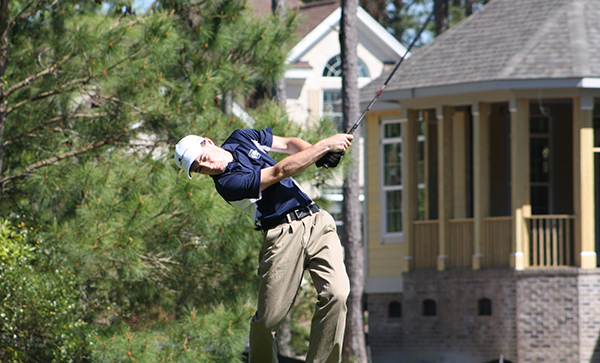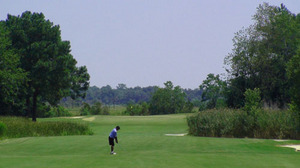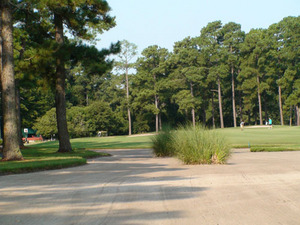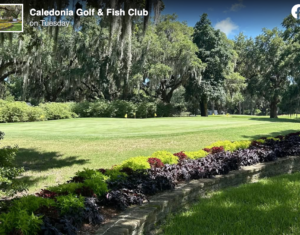Myrtle Beach’s Golden Oldies Still Shine

American popular culture rarely fails to bestow glory on the most talented of its young, hence the public fascination with high school athletic phenoms and 18-year-old starlets.
For better or worse, golfers are often no different, placing a priority on the hottest new driver, putter or golf course. The attraction of new layouts is understandably strong in Myrtle Beach, where opening one of America’s top 10 new courses is like a rite of passage in the spring (welcome, Leopards Chase), but Grand Strand golfers shouldn’t chase something new to the exclusion of courses that helped lay the foundation for the area’s success.
Maturity in a golf course doesn’t attract headlines, but it makes for happy golfers, as savvy Myrtle Beach players know.
When Myrtlewood first opened its doors in 1966, there were fewer than 10 layouts in the area. The facility watched more than 100 courses sprout up but its place in the market never wavered.
The same could be said for other “mature” Myrtle Beach courses that have become buried treasure for golfers. Sure some of the Grand Strand’s best courses are among its oldest – Dunes Club and Kings North come immediately to mind – but people sometimes lose sight of the generation of layouts that started Myrtle Beach’s ascent.
Pine Lakes International Country Club, the Grand Strand’s first layout, rightfully enjoys a lofty place in area’s lore, but courses like the two at Myrtlewood, Litchfield Country Club, Possum Trot, Whispering Pines and Myrtle Beach National Southcreek and West can get lost in a world drawn to bright lights and the latest craze.
If you are looking for good golf, you shouldn’t make the same mistake.
Myrtlewood, home of the PineHills (1966) and Palmetto (1973) courses, embodies much of what makes the Grand Strand the world’s most popular golf destination. Both courses offer good layouts, are impeccably conditioned, and the Palmetto’s views of the Intracoastal are picturesque.
It’s also located in the heart of Myrtle Beach, making it the area’s most accessible facility. Myrtlewood is the Teri Hatcher of Myrtle Beach golf courses, a beauty whose time in the limelight ebbs and flows but her attractiveness has never wavered.
Whispering Pines has improved with age as well, enjoying a post 40 surge after a makeover.
Opened in 1962, Whispering Pines, long known as the “Best Kept Secret in Myrtle Beach,” has always been a strong layout, challenging golfers with a traditional brand of golf. Narrow fairways and small greens characterize a course that was designed by a group aligned with a young Pete Dye.
In recent years six holes have been renovated, toughening some while making others more playable, enhancing the facility’s reputation along the way.
Another venerable Myrtle Beach golf course – Quail Creek (1968) – has become a breeding ground for the game’s future. Owned by Coastal Carolina University, Quail Creek’s staff, other than its head and assistant professional, is filled with students in CCU’s professional golf management program.
Student involvement even extends to course maintenance, and if the results are any indication, the game’s future is in good hands.
 The area’s southernmost course, Wedgefield Plantation (1973) is a traditional, Lowcountry South Carolina layout. Narrow, tree-lined fairways place a premium on accuracy, and the Waccamaw River and local marsh provide Wedgefield with its natural beauty.
The area’s southernmost course, Wedgefield Plantation (1973) is a traditional, Lowcountry South Carolina layout. Narrow, tree-lined fairways place a premium on accuracy, and the Waccamaw River and local marsh provide Wedgefield with its natural beauty.
Litchfield opened along with PineHills in 1966, making it among the best years in the early history of Myrtle Beach golf. Likes its mature brethren, Litchfield challenges players with a relatively short, but taxing course. Precision is rewarded over power, and a thinking man’s golfer is likely to excel.
On the North end, home to a bunch of standout modern courses, Beachwood Golf Club and Possum Trot are the area’s golden oldies. There are no gimmicks at Possum Trot, a favorite course of Myrtle Beach locals due to its conditioning, a solid design, and a standout practice facilities.
A Gene Hamm design, Beachwood is one of the area’s most enjoyable layouts and an exceptional value.
New courses are great to play, who doesn’t want to try the best of Love, Price and Cate, but the Grand Strand’s “senior set” is every bit as much a must-play for golfers that want the complete Myrtle Beach experience.




